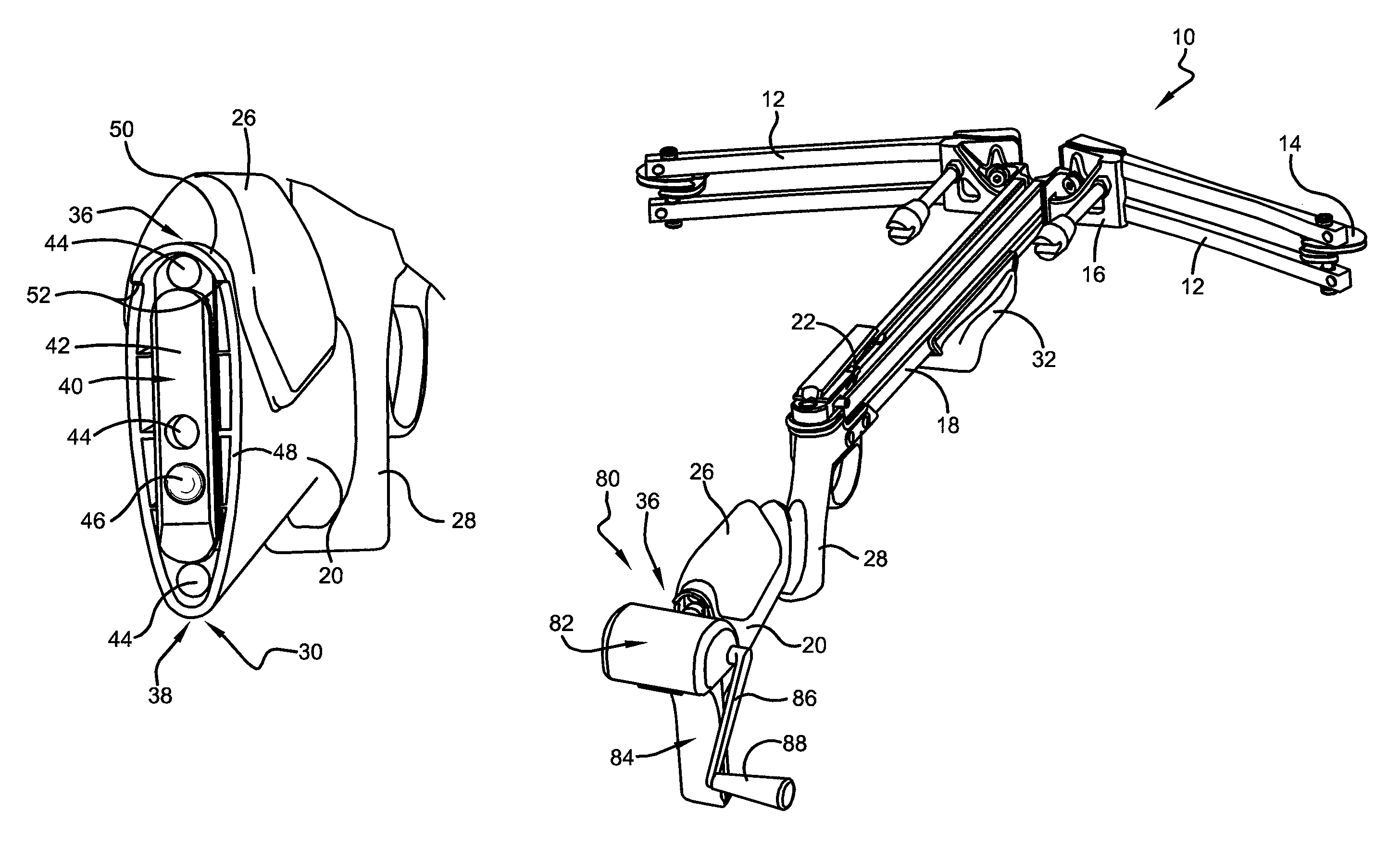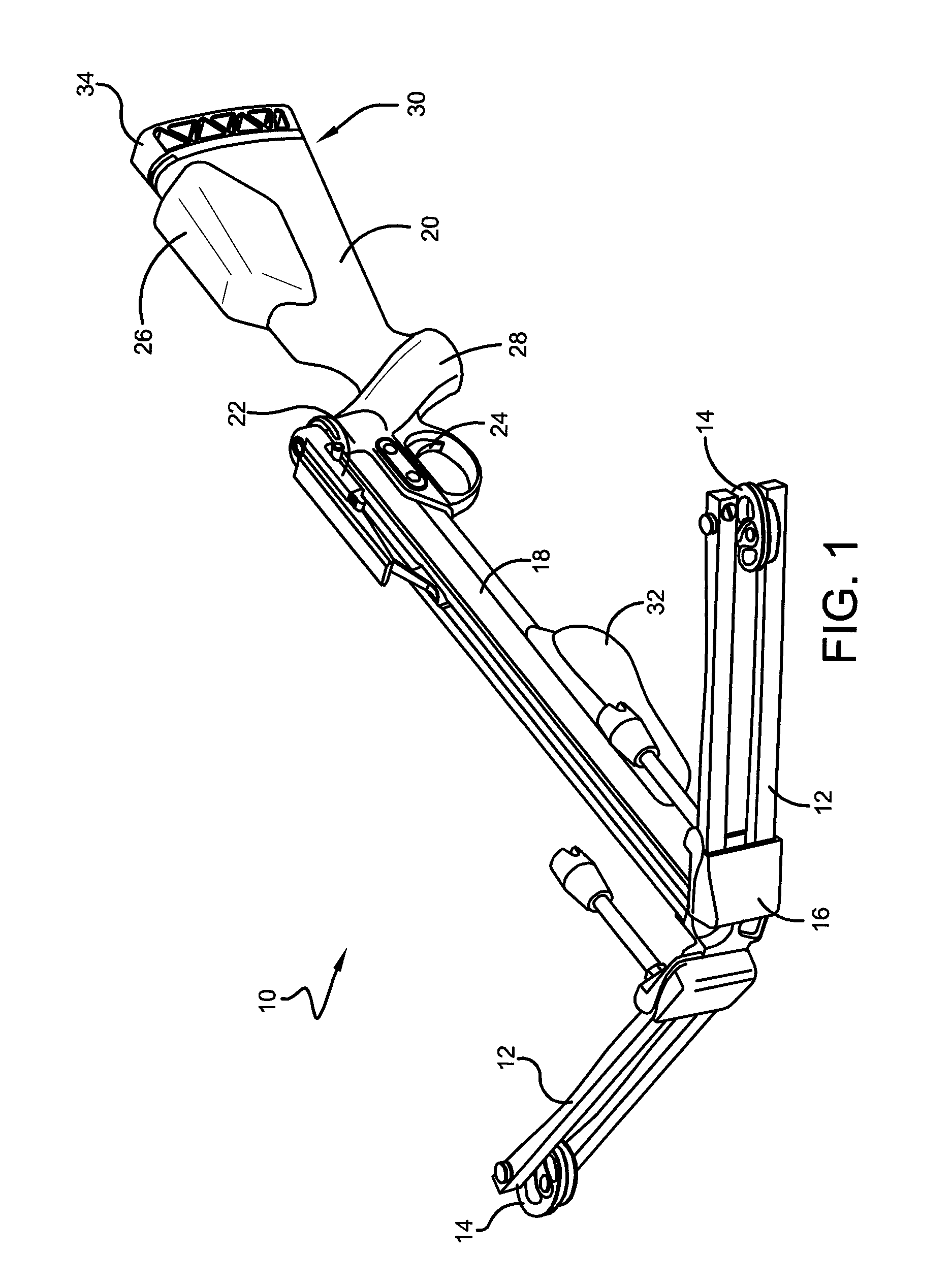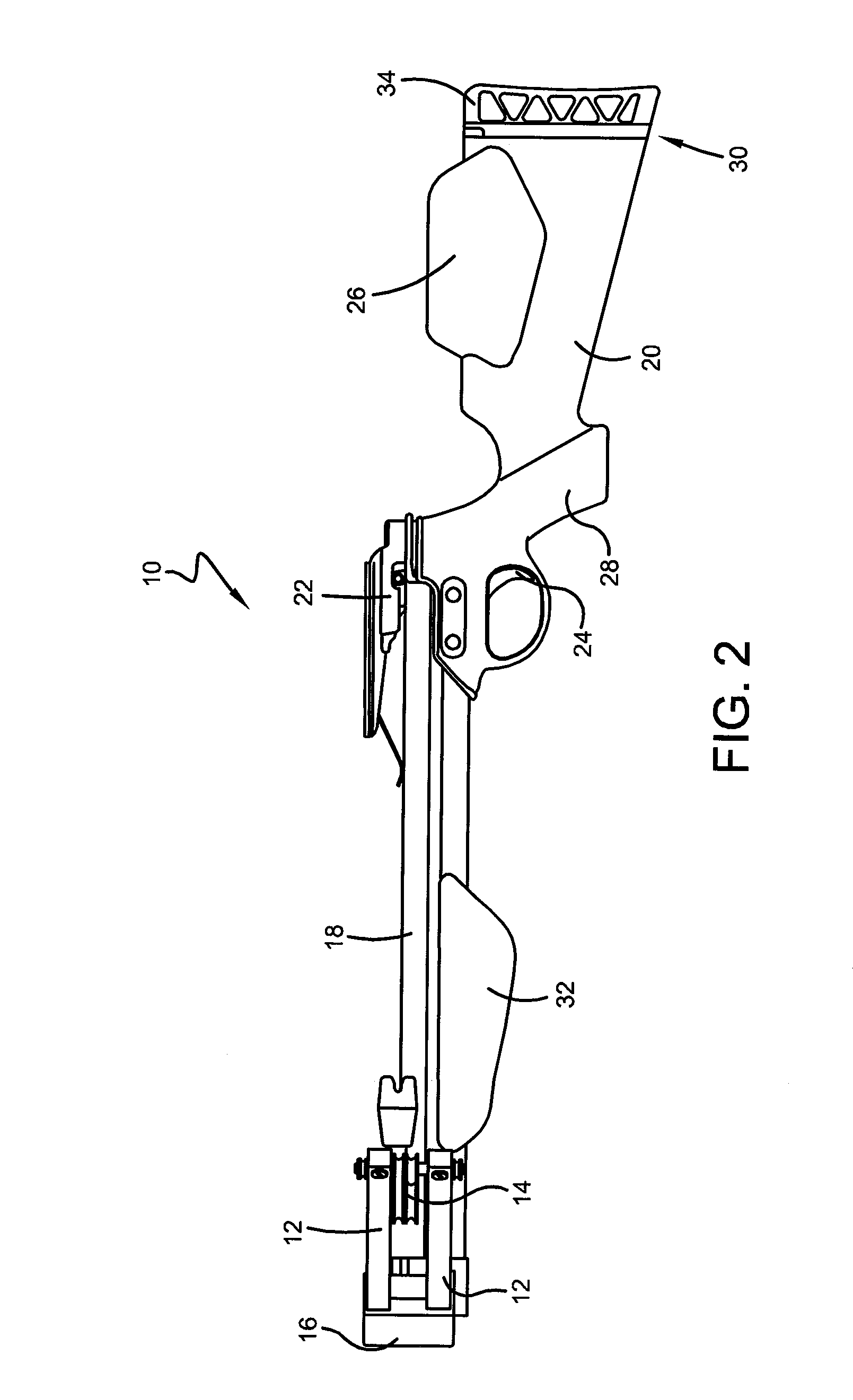Crossbow and components attached by a sliding joint assembly
a sliding joint and crossbow technology, applied in the field of archery, can solve the problems of ineffective cocking rope for some archers, high work requirements, and difficult cocking of most difficult bows
- Summary
- Abstract
- Description
- Claims
- Application Information
AI Technical Summary
Problems solved by technology
Method used
Image
Examples
Embodiment Construction
[0025]A crossbow having features of the present invention is generally indicated by the numeral 10. Crossbow 10 has many components common to crossbows including limbs 12, cams 14, a riser 16, a barrel 18, a stock 20, a latching mechanism 22, and a trigger 24. Some crossbows may have modified versions of, or may not include, some of the general crossbow components discussed above, but regardless, the essential purposes and structural features of such components are well known in the art.
[0026]Stock 20 includes a comb (cheek rest) 26 and a grip portion 28, and extends from a grip portion 28 positioned near the trigger 24 to a butt end 30. A fore-end grip 32 is provided on barrel 12 between latching mechanism 22 and riser 16, and provides a location for an archer to grip crossbow 10, particularly when it is positioned in the shooting position. Generally, stocks support the barrel and the firing mechanisms in a crossbow, and provide a means for an archer to support and aim the crossbow...
PUM
 Login to view more
Login to view more Abstract
Description
Claims
Application Information
 Login to view more
Login to view more - R&D Engineer
- R&D Manager
- IP Professional
- Industry Leading Data Capabilities
- Powerful AI technology
- Patent DNA Extraction
Browse by: Latest US Patents, China's latest patents, Technical Efficacy Thesaurus, Application Domain, Technology Topic.
© 2024 PatSnap. All rights reserved.Legal|Privacy policy|Modern Slavery Act Transparency Statement|Sitemap



